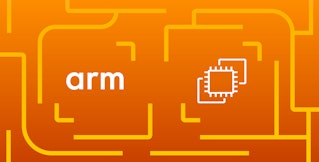
Paul Gottschling
Acorn RISC Machine (Arm) processors were first released in 1985 to support low-power, low-cost computing, and their next big use is in the cloud. AWS has added a range of Arm-based EC2 instance types, from the A1 type in 2018 to three even more powerful types based on the proprietary Graviton2 processor (announced at AWS re:Invent 2019). Meanwhile, Arm and Docker are working on tighter integration.
To support the growing popularity of Arm-based machines, we've released a Datadog Agent that is compatible with Arm v8 architectures, including all of the Arm-based EC2 instance types: A1, M6g, C6g, and R6g. Like other distributions of the Datadog Agent, the Agent for Arm can collect metrics, traces, logs, and more so you can get comprehensive visibility into your infrastructure.
Your Arm cloud in context
As Arm enters the cloud computing space, it's important to monitor your Arm-based hosts alongside their more traditional counterparts. Datadog's host map can visualize your whole infrastructure at once, enabling you to track system-level metrics across your Arm-based or mixed-processor deployment. For example, if you're transitioning your EC2 cluster from the Intel-based T2 instance type to the Arm-based A1 type, you can group your host map by the instance-type tag to compare CPU utilization between each kind of processor and scale your deployment accordingly.

If your workloads are containerized, you can use the container map and Live Container view to track the values of per-container metrics across Arm– and Intel-based machines, across availability zones, or according to any tag you choose.
Like all of our Agents, the Datadog Agent for Arm integrates with a range of technologies, so you can monitor every part of your environment. (We have 850 integrations and counting.)
Peer inside your processor
Datadog's Live Process view can help you get the most out of your Arm-based processors. Once you enable process collection, the Datadog Agent automatically tracks running processes on your Arm devices, without needing to SSH into them to run top or ps. In Datadog, you'll see trees of parent and child processes, as well as graphs showing the load on your processor in terms of CPU utilization and number of threads. You can filter and group your processes using tags like service, host, and user to see where the load is heaviest, and determine whether to scale your Arm-based deployments.

Distributed workloads, centralized monitoring
Amazon's Arm-based instance types are designed to facilitate horizontally scalable workloads, making it possible to fine-tune your deployment and optimize cost. Datadog's distributed tracing and APM gives you insights into request rates, error rates, and latencies across your services, so you'll know when you are facing peak demand and quiet periods no matter how many devices you have deployed. With the Service Map, you can easily spot bottlenecks in your distributed workloads, and you can use App Analytics to see when your applications face the most incoming traffic—and what kind of performance impact that brings.

An Agent on every device
The Datadog Agent for Arm is now generally available, and you can deploy it today to get more visibility into your cloud-based compute workloads. If you don't have a Datadog account, you can sign up for a free 14-day trial.





